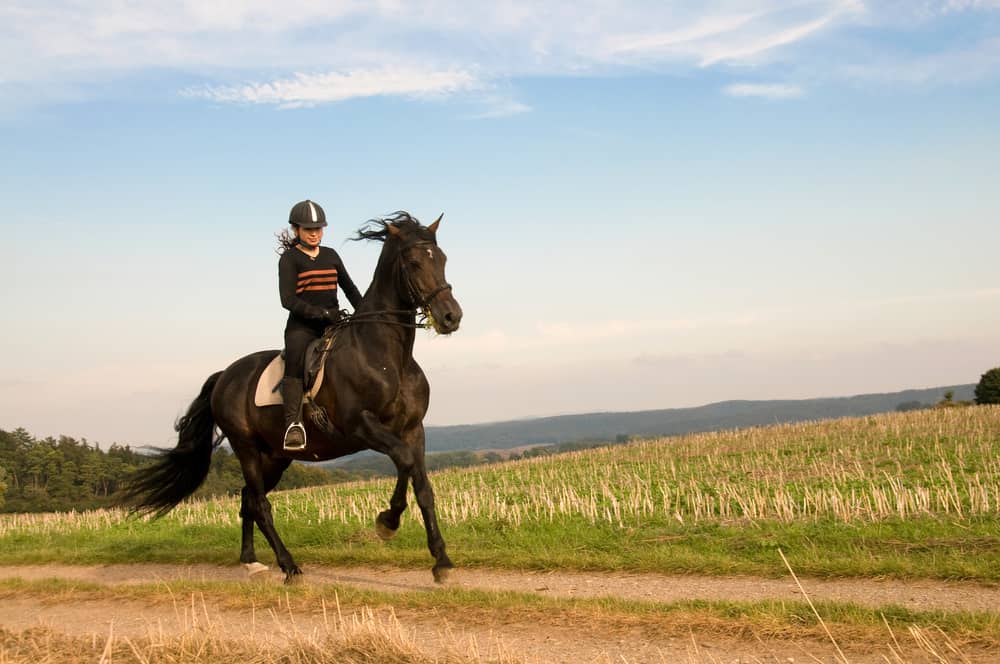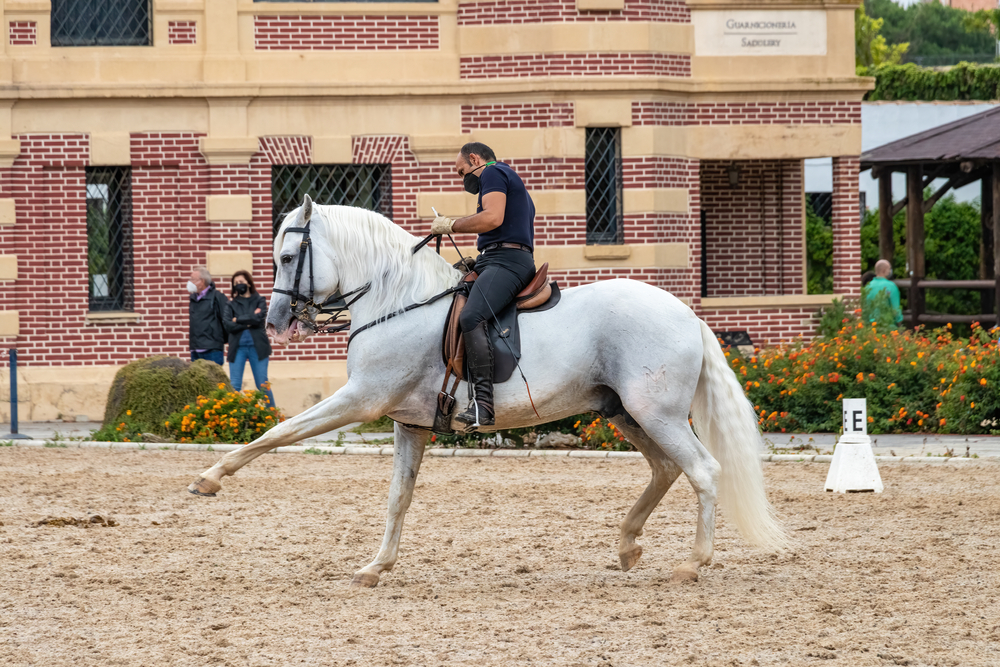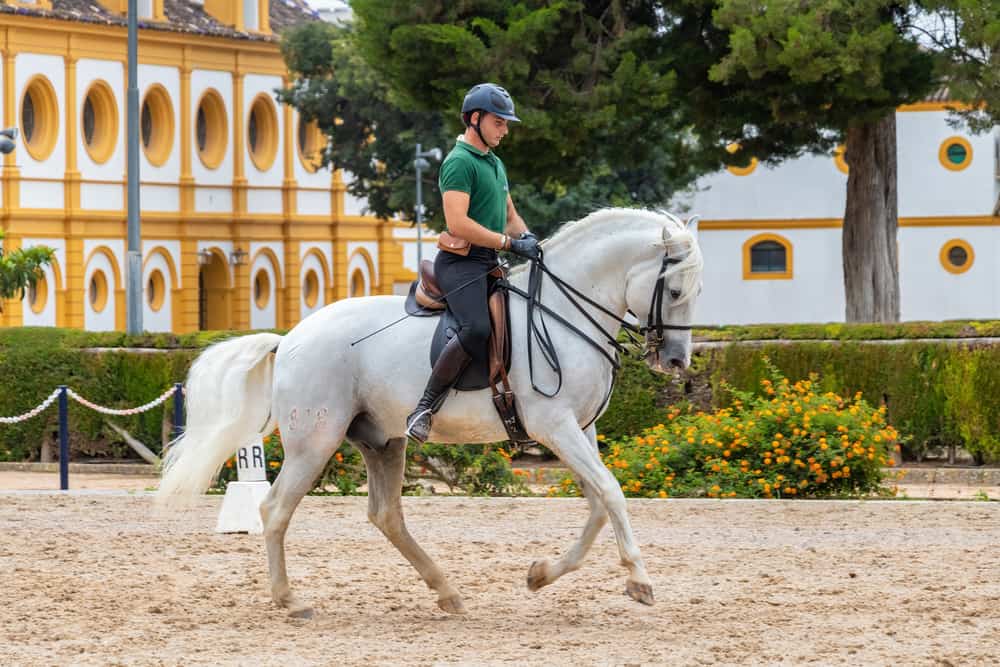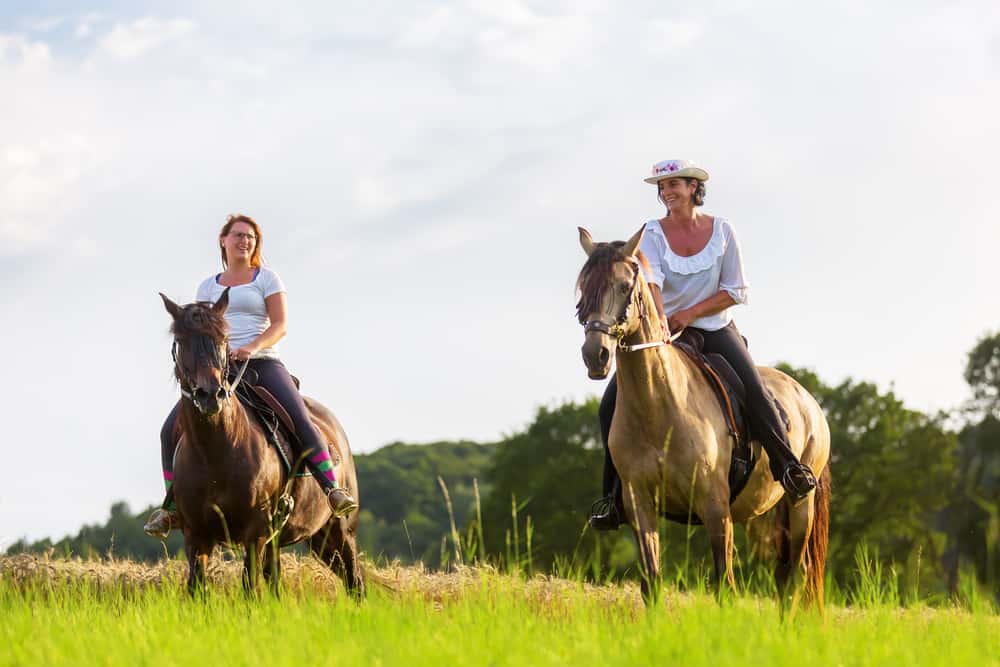There are many methods for training an Andalusian horse, but all will require patience, dedication, and consistency. The first step is to become familiar with the temperament and personality of your horse. Each animal is different, so it’s essential to learn what makes them tick and how they best learn.
Some basic concepts common to most training methods include establishing trust between horse and handler, good rewarding behavior, and providing explicit instruction calmly and consistently. It’sIt’s essential to be gentle yet firm, as horses are intelligent animals that can quickly sense when their trainer is unsure of themselves.

Many trainers use positive reinforcement to train their horses, which entails rewarding good behavior with treats or words of praise. This method tends to be more effective than punishment or discipline, as it encourages the horse to associate good behavior with positive outcomes.
There are many different approaches to Positive Reinforcement Training, so it’s essential to find one that works best for you and your horse.
Other popular methods for training Andalusian horses include classical dressage (which focuses on developing the horseshoe’s obedience and movement) and cutting (a sport that tests the horse’s ability to stop on a dime and turn around). Whichever approach you choose, focus on developing a strong bond with your horse and making training sessions enjoyable.
It’sIt’s essential to remember that while Andalusian horses are known for their graceful movements and noble bearing, they are still animals and require patience and consistency when being trained. You can create an excellent partnership with your Andalusian horse with the proper methods and techniques.
Table of Contents
Are Andalusian horses easy to train?
Andalusian horses have long been renowned for their ease of training. This is partly due to the breed’sbreed’s naturally calm and docile temperament and exceptional intelligence. The breed has been used for centuries for various equestrian disciplines such as Dressage, Show Jumping, and Driving and continues to be a popular choice among riders.

When training an Andalusian horse, it is essential to remain consistent and patient with the process. They may take longer to learn specific tasks than other breeds due to their sensitive nature, but they are willing learners and will eventually understand what is expected of them.
It’sIt’s also a good idea to provide positive reinforcement when teaching the horse new skills, as this will encourage them to continue learning.
Andalusians follow basic commands and groundwork, such as halting, backing up, and turning in a circle. Once they have mastered these basics, they can be taught more complex riding exercises.
It is important to remember that all horses require regular exercise and handling to maintain good physical health, so a consistent routine should be established.
What is the easiest horse to train?
When training a horse, many people often wonder what the easiest breed of horse is. While many factors can affect how easily a horse can be taught, some species tend to be easier than others for beginners. When looking for an easy-to-train horse, it’s essential to consider temperament, intelligence, age, and other factors.

Regarding temperament, some horses have a calmer disposition than others. Horses with naturally calm temperaments tend to be easier to train than those more high-strung or sensitive. That said, even the most hot-blooded horse can be prepared with patience and consistency.
Intelligence is another factor to consider when looking for an easy-to-train horse. Intelligent horses are often better at picking up on cues and commands, making them easier to train than their less intelligent counterparts. However, there is a delicate balance between intelligence and sensitivity; too much of either can make the training process more difficult.
Age is also an essential factor when looking for an easy-to-train horse. Generally speaking, younger horses are more accessible to train than older ones, as they are more malleable and less set in their ways. Of course, this varies from horse to horse, so research before deciding.
At what age can an Andalusian horse be ridden?
Riding an Andalusian horse can be a thrilling experience, but knowing the right age to start can be significant. Generally, experts recommend that a horse should only be ridden once it is at least 4 or 5 years old, although some may be ready earlier or later depending on their breed and training.

A young Andalusian horse should be handled daily and trained consistently for at least two years before it ever carries a rider. This is to ensure that the horse is comfortable with being handled, knows basic commands such as stopping, turning, and backing up, and has developed strong muscles capable of carrying a human.
In some circumstances, an Andalusian horse may be ready to start work at a younger age. For example, a horse that has been handled since birth and is used to being around people may be able to take on light riding duties at three years old or earlier.
Similarly, if an Andalusian was previously trained for dressage or another type of competition and knows how to perform certain moves, they may be ready to start riding sooner.
Always use caution when riding an Andalusian horse and wait until it is physically and mentally mature enough for the task. This means being patient and understanding that each horse develops differently.
You can enjoy an excellent relationship with your Andalusian horse for many years with proper care, training, and patience.
Are Andalusian horses suitable for beginners?
The Andalusian horse is native to the Iberian Peninsula and has been used extensively by Spanish riders for centuries.

They are known for their beauty, strength, agility, and ability to perform challenging maneuvers such as piaffe and passage. This makes them a popular choice among many dressage riders, both professional and amateur. However, there are better choices for beginner riders.
Andalusians are a very high-strung breed with strong personalities. Their athleticism and intelligence require experienced riders who can give them consistent training and direction to stay safe while riding.
Beginner riders may find it challenging to handle this breed’sbreed’s strong will and need for training, which can lead to dangerous situations. In addition, the horse may become stressed when asked to do something that it doesn’tdoesn’t understand or is uncomfortable doing.
A beginner rider can own an Andalusian horse, but they should be prepared to get professional help with training and handling the horse. They should understand how to work with such an intelligent, powerful breed to get the most out of their horse.
Beginner riders may also consider other breeds better suited for novice-level riders, such as Quarter Horses or Thoroughbreds. These breeds tend to be more docile and easier to handle.


